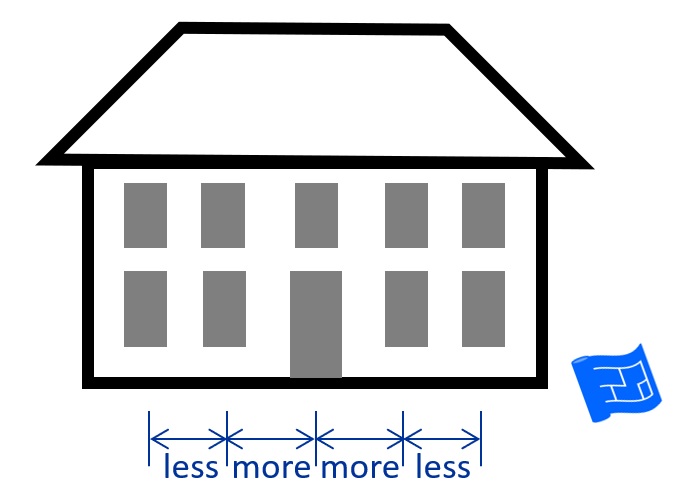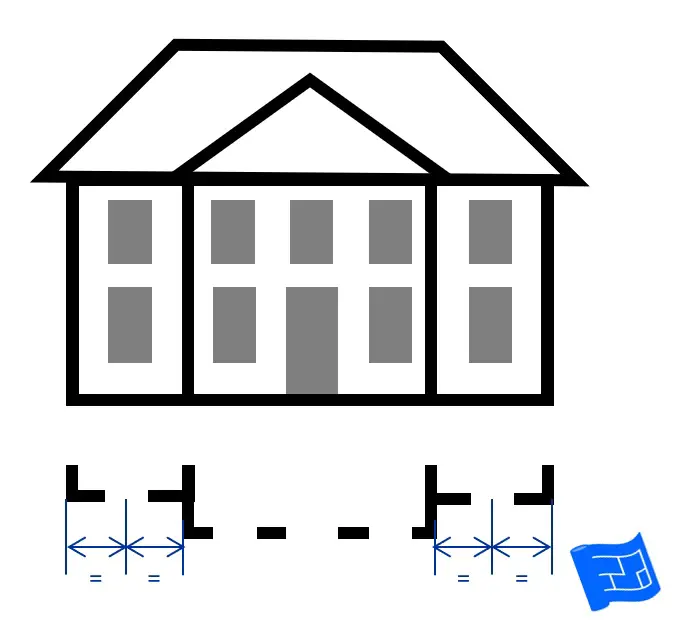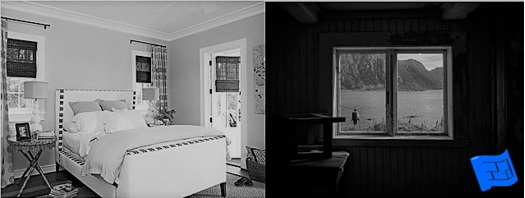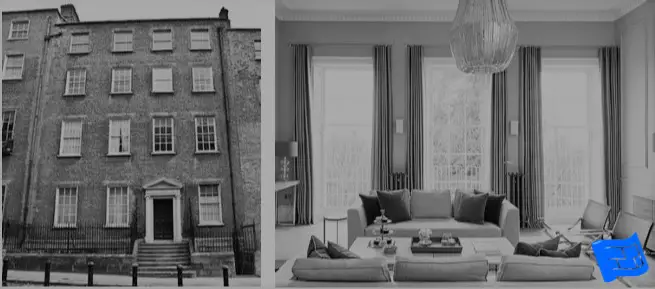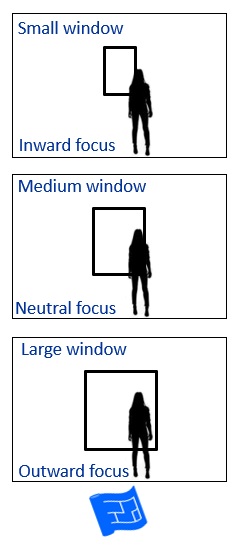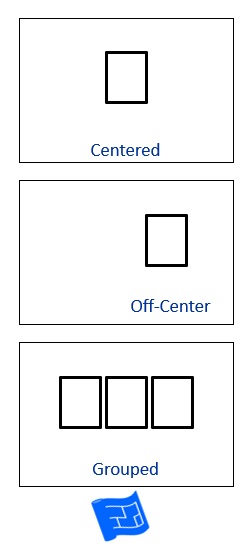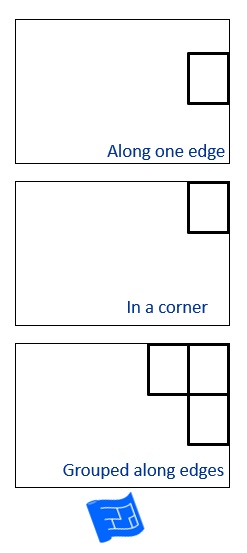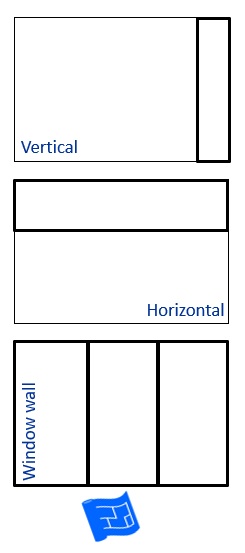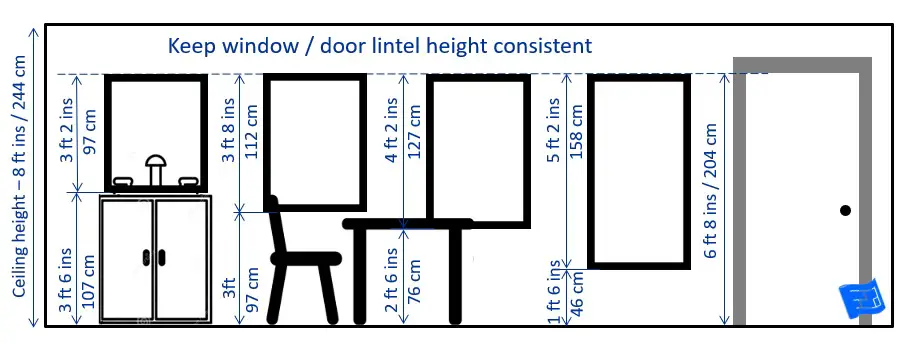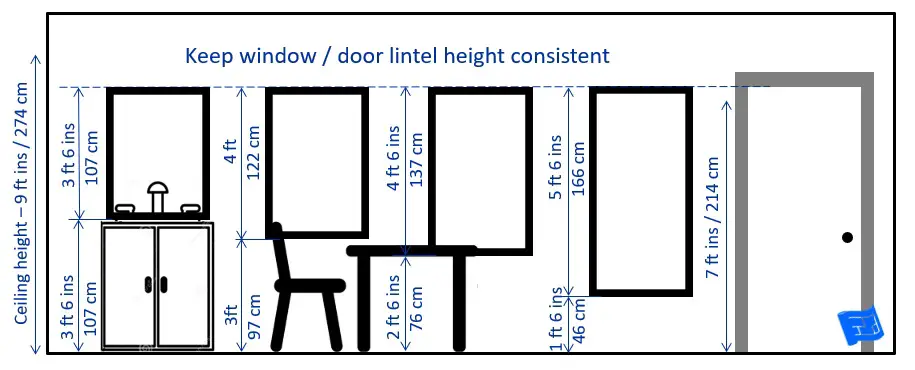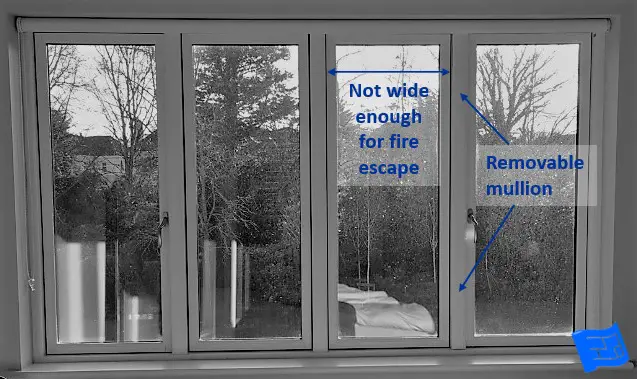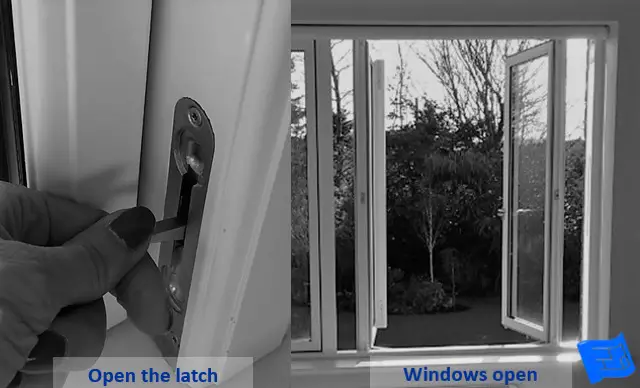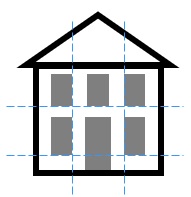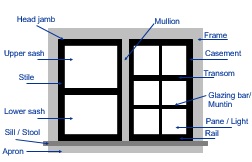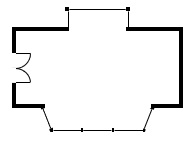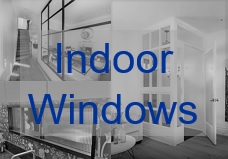- Home
- Window Design
- Window Placement
Window Placement
Window placement is critical to the success of your window design and overall home design. The window arrangement can contribute to the style, function and enjoyment of your home or work against it.
When the windows are right we hardly notice because the windows blend with the other design elements to make an appealing overall design. When the window placement is wrong it's really noticeable. It just looks off.
The placement of your windows presents an extra challenge because the window position needs to work from the perspective of each room both from the exterior and interior of your home. So that's how we're going to tackle this - firstly from the exterior perspective, then moving inside to the interior.
Window placement when viewed from the exterior
In this section we'll be looking at window placement from the exterior perspective. There are a few subsections in this section.
Skip to interior window placement if that's what you're more interested in.
The window placement of windows on the street facing facade of your home are particularly important as they contribute to the all important kerb appeal of your home.
For windows visible from the street make the frames and placement consistent with the style of your house. Each style has a sort of window rhythm. This is much less important at the back of your house where you might want to include more modern big glass windows.
Window placement - amount of window compared with amount of wall
On any particular facade of a home, particularly the street facing side, there has to be the right amount of area given over to window and wall. The proportions of solid (wall) to void (window) that will suit your home depends on the style you're trying to achieve. In the pictures below we look at a traditionally shaped house with different amounts of window to wall.
First - too much window.
Now - too much wall.
Window placement - line and proportion
Preserving vertical and horizontal lines
Generally the design of most styles of homes, both traditional and contemporary will be enhanced by lining up the windows vertically up and down the facade and horizontally across the facade.
If there aren't clear vertical and horizontal lines, the facade of the house is somehow harder to read.
Sometimes it might not be possible to line up windows exactly. If that's the case think about aligning the center of one window with the edge of another.
Keeping a consistent shape
Windows on any particular facade of a house should be of the same shape in the main. It can be a nice touch to vary the shape of windows to add interest provided that this technique is applied in the correct proportion in terms of size and number of windows.
 The bottom right window is a different shape and makes us wonder what is different about that room. It adds interest to the facade without being too distracting
The bottom right window is a different shape and makes us wonder what is different about that room. It adds interest to the facade without being too distractingIf there are too many windows that are a different shape, there is too much going on visually with the facade.
Preserving proportion
What is proportion?
The proportion of an object is the relationship between two dimensions. When we talk about the proportion of windows or lights (the smaller panes of glass if a window is divided) we're referring to the relationship between the height and width.
For traditional house styles it's best that a consistent proportion is used throughout the design. The proportion can be applied to window openings, window lights, shutters etc.
In contemporary house styles it might be than not preserving the proportions of the windows creates the effect you're looking for.
Let's have a look at some methods of preserving proportion in a lighted window in a traditional style.
In the image below, in the right hand set of upper and lower windows, the proportion is preserved by making the window lights the same size. The lower level has five rows of lights and the upper level has four rows of lights.
On the left the proportion is preserved by setting the opening of the upper level (the opening of the whole window) to the same proportion as the individual window lights on the lower level.
Obviously you wouldn't use both these methods right next to each other.
 Preserving proportion in windows. In the right hand set up of upper and lower windows the proportion is preserved by the window lights being the same size. In the left hand set the proportion of the upper window opening is the same as the proportion of the individual lights on the lower level.
Preserving proportion in windows. In the right hand set up of upper and lower windows the proportion is preserved by the window lights being the same size. In the left hand set the proportion of the upper window opening is the same as the proportion of the individual lights on the lower level.Proportional emphasis
The other thing to decide on is the proportional emphasis of the windows in your home design. Are the windows going to emphasize the horizontal (landscape) or the vertical (portrait) direction? For traditional house styles, the emphasis is usually vertical.
 The shape on the left has vertical proportional emphasis. The shape on the right has horizontal proportional emphasis.
The shape on the left has vertical proportional emphasis. The shape on the right has horizontal proportional emphasis.If the home style you choose has a vertical emphasis, what happens when a window opening with a horizontal emphasis is required?
The answer lies in using lights to divide the window up into panes that have a vertical emphasis.
 Openings with horizontal emphasis (top image) can be given a vertical emphasis by sub dividing the opening (bottom two images)
Openings with horizontal emphasis (top image) can be given a vertical emphasis by sub dividing the opening (bottom two images)The art deco style has a horizontal emphasis and the same principle to change proportional emphasis can be used in the opposite way.
Window placement - window spacing
With this principle we tackle how to decide on the space between windows. We'll look at a few different things.
- Check that your windows aren't too close or too far apart.
- Use window spacing for horizontal emphasis
- Use window spacing to differentiate between stories
Too close or too far apart?
Let's start with an example of well spaced windows.
Now if the windows are moved towards the center just a touch you can see that things start to look a bit off. It's like the house is a bit cross eyed.
At the opposite end of the scale, if the windows are moved to the outer walls of the house our eyes don't quite know where to rest.
Using window spacing for horizontal emphasis
The horizontal spacing between windows and doors can be used to create emphasis on different parts of elements of the design.
To start with, here's an example of window placement with no horizontal emphasis. The center points of the central door and windows and the other window bays is equal. This arrangement looks fine but can feel rather static.
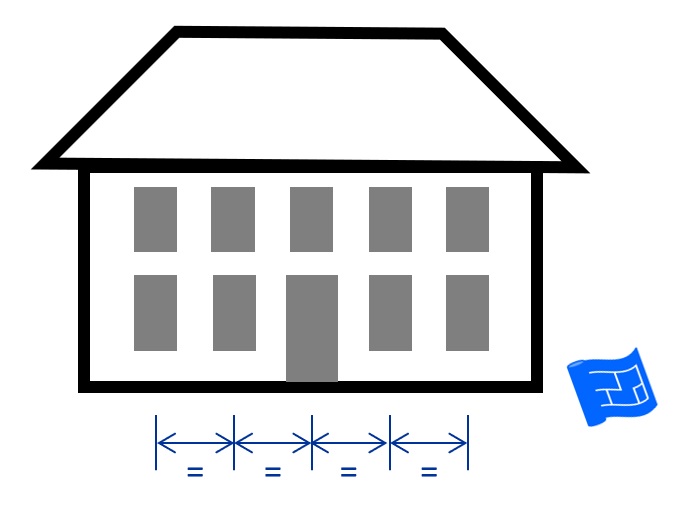 Window placement with equal spacing between the central points of all elements leading to no horizontal emphasis
Window placement with equal spacing between the central points of all elements leading to no horizontal emphasisNow if we make a fairly subtle change and shift the outer bays of windows out from the center, the central part of the house is emphasized.
This can also happen naturally as in a house this size the width of the central hall would need to be wider than the door itself while still allowing for symmetry in the rooms either side.
Using window spacing to differentiate between stories
It is good practice to decrease the size of windows on the upper floors of a house.
In the first example, the windows are the same size (in particular the height is the same) and placed evenly vertically.
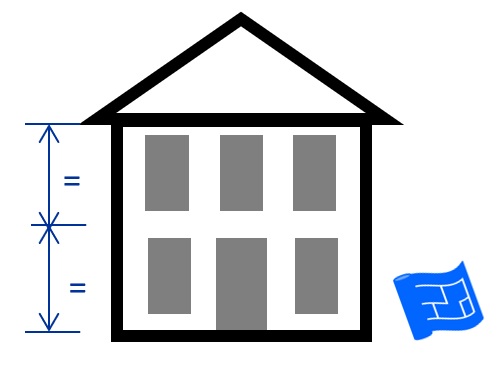 Window placement and size where there is no vertical emphasis to differentiate the floors of the home
Window placement and size where there is no vertical emphasis to differentiate the floors of the homeNow if we decrease the height of the windows on the first floor this gives more emphasis to the ground floor and the overall effect is somehow more visually pleasing.
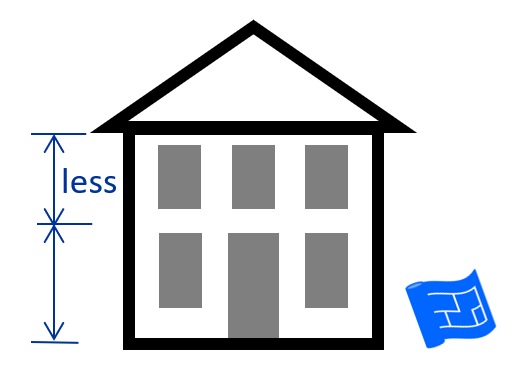 Window placement and size where the height of the windows on the first floor is less than the ground floor emphasizing the ground floor and creating a visually appealing composition
Window placement and size where the height of the windows on the first floor is less than the ground floor emphasizing the ground floor and creating a visually appealing compositionWindow spacing for houses with variable depth facades
As the size of a facade increases, a common way to add interest to the facade is to vary the depth of the house along the facade creating areas of the facade that 'bump out'.
In the examples given below the house has a central bay. The principle discussed in this section applies equally to other arrangements of varying the depth of a facade.
The most obvious way to decide on the window placement for the outside 'wings' on the house below is to place the window centrally in the wall of the wing as viewed from the exterior.
The better way to place the windows in the outside wings is to place the windows centrally from the wall on the interior.
This positions the windows slightly more towards the center of the house. I think it makes the house look more solid and grounded.
The view from the outside in
We've already talked about the way windows look from the outside with respect to decoration. That is, the impression the windows give as part of the overall design when the whole or majority of the home is viewed from a good distance.
When we're up closer to a home we can actually see into the windows and that's what I mean by the view from the outside in. It's another way of saying that privacy needs to be a consideration in your window design. Think about what people can see from the street and what your immediate neighbors can see from their homes and outdoor spaces.
If privacy is an issue, consider the type of window glass you use in your window.
Remember that privacy doesn't just apply to rooms where you might be in a state of undress. Are there any windows in your house (eg into the garage onto your car) that might be best obscured from prying eyes?
A few examples
Here's a Disneyesque chateau example that demonstrates some of the principles for window placement we've been discussing.
Can you spot the window that's a different shape, just to add a bit of interest? Hint - look on the turret on the left.
 This chateau exhibits some of the principles of window placement including smaller window sizes on upper floors and increased spacing around the central door and windows.
This chateau exhibits some of the principles of window placement including smaller window sizes on upper floors and increased spacing around the central door and windows.This house below has a split level design meaning that the rooms on the ground floor have varying ceiling heights. This means that the second floor has different floor levels. You can see how it's caused a few problems with the front facade of this house.
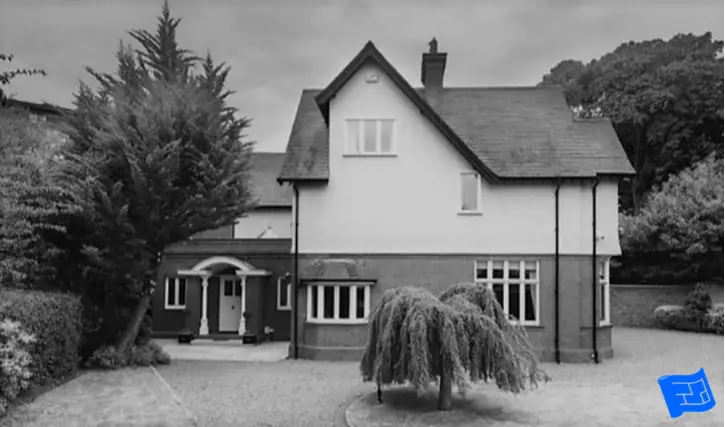 This house has a split level design which gives some of the lower rooms great ceiling height but plays havoc with the window placement on the exterior
This house has a split level design which gives some of the lower rooms great ceiling height but plays havoc with the window placement on the exteriorWindow placement from the interior
So, now we're ready to move inside and look at windows from the interior perspective. There's several sections to have a look at:
- Window placement for capturing light
- Window placement on interior walls
- Views from the inside out
- Window placement for different activities
Window placement for capturing light
Intuitively we all know that for everyday living, a room with plenty of light is more pleasant to be in than a dark room. Here's a few ways to make sure the main rooms in your home have a great quality of light.
Light from two sides of the room
In your main rooms which are greater than about 8ft or 2.5m deep, aim to have windows on two sides of each room to let light in from different directions at different times of the day.
Apart from the obvious fact that the room will be brighter with more light penetrating deeper into the room, having light from two sides...
- prevents glare and shadows around and objects and people, especially their faces.
- prevents the window housing the wall appearing very dark which can affect how the same paint color looks on different walls.

Friendly faces
There are studies which show that facial expressions are more easily understood when there is a light landing on the face from more than one source. Being able to pick up on facial cues is an important part of human communication and if we find ourselves in a situation where we need to make more effort to communicate this sends subliminal signals that make us feel slightly uncomfortable in the space.
5 More window placement ideas to let more light in
If it isn't possible to have light on two sides of your larger rooms here's a few ways to mitigate the problem.
1 - Use a skylight
The light from two sides need not necessarily be from two walls. It could be a window and a skylight.
 Using light from above is a great way to introduce more light into a room and introduce light from different directions.
This is a section view - looking across from the side of the room.
Using light from above is a great way to introduce more light into a room and introduce light from different directions.
This is a section view - looking across from the side of the room.2 - Have windows high in the walls
Raising the ceiling height and placing a window in the extra height means that light can penetrate further into the room.
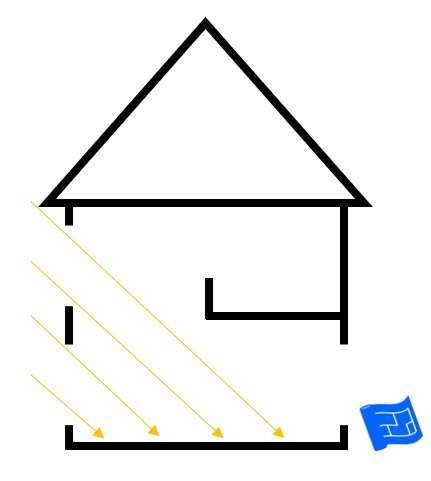 Window design ideas - use windows high in the wall.
This is a section view - looking across from the side of the house.
Window design ideas - use windows high in the wall.
This is a section view - looking across from the side of the house.
Window placement in Georgian houses
At the moment I'm living in Dublin and there are lots of Georgian town houses. They are built in long terraces which makes having light on two sides of every room a challenge. The light problem is solved by having high ceilings with tall windows which allow light to penetrate as much as possible in the room.
In addition to this the front and back room are usually separated by folding doors which allows light to come in from two sides when the use of the rooms is such that it's possible to open the folding doors.
3 - Use mirrors
Introducing a mirror will reflect the light from the window around the room. It's almost as if there's a second window. Mirrors are a great way to increase the amount of light in your room.
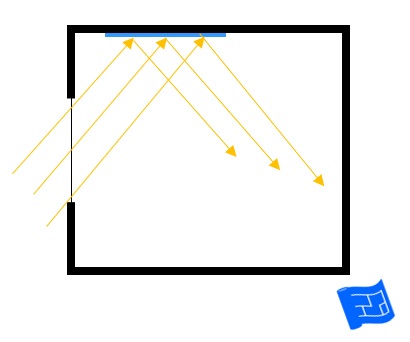 A mirror will reflect light further into a room.
This is a plan view looking down from the ceiling of the room.
A mirror will reflect light further into a room.
This is a plan view looking down from the ceiling of the room.4 - Consider bay windows
With a bay window, the shape of the window will let in light from different directions.
Read more about bay window designs.
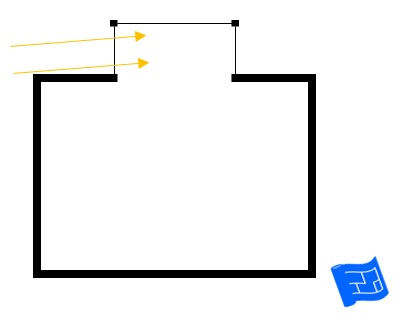 A bay window allows light from the side, which would otherwise remain outside the room to enter into the room.
This is a plan view looking down from the ceiling of the room.
A bay window allows light from the side, which would otherwise remain outside the room to enter into the room.
This is a plan view looking down from the ceiling of the room.5 - Make good use of window reveals
Ensure the surfaces immediately around your
windows, also known as the 'reveal', are designed to their full advantage. Your window reveal design can really add to the character and function of a window.
Window placement on interior walls
In this section we'll look through a few ideas for window placement viewed from the interior. Some of the window placements are more suitable for traditional styles and some are more suitable for contemporary styles of home.
What size of window would suit the scale of the room and help contribute to the atmosphere you're trying to create?
Windows can be placed in the center, or off-centered. Would a group of windows look best?
Windows can be placed at the corner of a wall.
What if the windows extend the whole length of a wall?

You might find yourself asking how to balance the appearance of your windows from the inside or the outside. When you're trying to strike a balance, consider the following points:
- How long will you be spending inside the room? Will you be using the room for hours a day, or is it a hallway where you'll be passing through various times a day?
- Will the window contribute to or detract from the kerb appeal of your house?
- Will you spend long period in your garden looking at the window from the outside?
Mary Beth's kitchen window design
Mary-Beth moved into a house with a dark kitchen located at the back of the house. She worked with an architect to remodel the back of the house to include a much bigger window for the kitchen. The first solution suggested by the architect focused on the appearance of the window from the garden which meant that there were some structural elements that were not ideal from the inside. Mary-Beth had the architect revise the plans switching the focus to how the windows worked for the people in the kitchen.
This was the right decision because:
- The climate means that her family will spend far more time inside the kitchen rather than outside looking back at their house.
- The kitchen window was at the back of the house so it made no difference to the kerb appeal.
Window Height
Window height is dictated by the height of the lintel (top of the window) and the height of the sill. It makes more sense to talk in terms of the lintel and sill level rather than the height of the window.
The level of the window lintel will be dictated by the ceiling height of the room. The taller the room, the higher the lintel.
Lintel height should be kept consistent within a room unless you're looking to make a specific design statement to the contrary.
The level of the sill depends on a few things:
- The level of privacy that you want the window to provide. A higher sill will provide more privacy.
- The furniture planned for the room. In general it's best not to have furniture pressed up against glass. This is especially relevant for the kitchen and bathroom.
Let's see two rooms of different heights - 8ft and 9ft.
The view from the inside out
Some rooms have an internal focus or focal point such as a fireplace. For other rooms, the view out of the window is the focal point.
Naturally if there’s a great view you’re going to want to take full advantage. Try to place the window so that you can enjoy the view when you’re using the room. That is to say, we don’t tend to stand at the window and admire the view for long. Make sure you can also enjoy the view when you’re doing the main activity in the room, eg from sitting down at the kitchen table, or washing up at the sink, from the bed in the bedroom or from the sofa in the living room.
Different views can be compelling in different ways. A view of a city street can be impressive and interesting as much as a view of a landscape can be beautiful and peaceful.
If you’re reluctant to put a window in because of an ugly view the solution could lie in the type of window glass you use.
Here's a few other suggestions for dealing with an undesirable view.
- Orientate the windows away from the ugly view. Basically, is there another wall you could use for the windows?
- Do what you can to make the view better, eg planting, decorative security grill, painting an ugly wall facing the window with a beautiful mural.
- Try several smaller windows rather than one big window. That way, the eye focuses on the rhythm of several windows rather than what's beyond the windows.
- Place the windows higher up or lower in the room or at the side of the room so that the sight line does not land on the eyesore.
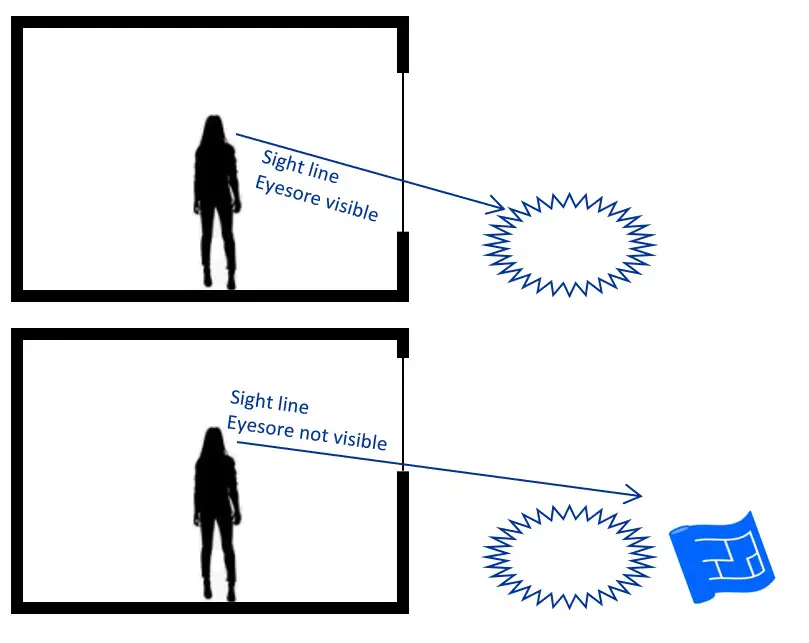 Demonstration of how altering the position of a window can avoid an eyesore being visible in the sight line
Demonstration of how altering the position of a window can avoid an eyesore being visible in the sight lineWindow placement for different activities
Here's a few things to take into consideration for window placement in relation to the different activities that go on in the rooms of your home.
Watching TV
No matter how much money you spent on your TV if the level of light in the room is really bright or there's a sun beam coming through the window and landing on the screen, your TV viewing experience is going to be compromised.
This issue can be overcome in a few ways:
- Think about when you usually watch TV and figure out where the light will be in the room. For example, we watch TV mainly in the evening so our TV is in a position that avoids the low evening summer sun shining onto the screen.
- Select appropriate window treatments (blinds / curtains) to control the brightness and direct light.
- The TV is often placed in a living space that is likely to have big windows which may be a focal point. It makes sense to place the TV in a position that makes it possible to either watch TV or admire the view. Placing the TV with it's back against the main windows or with it's back perpendicular to the main windows will achieve this.
Working
If you're working on a computer the points made above for TVs also apply to computer screens.
If you're working at a desk or table then it makes sense to make the best of natural light. If you're right handed, position the desk so that the natural light comes in from the left and vice versa if you're left handed. The basic principle is that you want to light up whatever you're working on without your body creating a shadow.
If you work with a computer at your desk make sure there's a window treatment to filter or block the light if necessary.
The above two points are a bit at odds with each other. Think about how you spend the most time working (with or without a computer) and plan accordingly
Sleeping
Obviously when you're sleeping you're not looking out of the window but if it's a warm night you'll definitely want to be able to open the windows to keep cool.

Codes and bedroom windows
You local building code will stipulate rules for the maximum window sill height and minimum window size. This is to make sure that you can get out if there's a fire.
Our window design ran into trouble in this regard. The wall opening was easily big enough but the window is divided into sections and the sections were too narrow to be a safe fire escape.
The problem was solved by making the one of the mullion posts removable.
Eating
For everyday eating a light filled space is ideal. If your home design includes an additional eating space or dining room for more formal occasions which tend to be at night there is no need for a large window. The focal point is the table and the atmosphere is created by lighting rather than daylight. As such a formal dining room can be placed in a part of the house that does not have much natural light.
However, if you're dining room does double duty as a homework table this 'no need for a window' clause doesn't apply.
Preparing food
Windows and over counter cabinets compete for the same wall real estate in a kitchen. If you think you're going to be short on natural light, two possible solutions are:
- Create a walk in pantry to take care of the storage to free up some of the wall space for windows.
- If you are planning an eat in kitchen, place the eating area near the exterior windows and move the sink and storage to the interior walls.
- Consider running windows between the countertop and the wall cabinets. Think about how this will look from the exterior. It's a more contemporary look from both the inside and outside.
For windows that are above kitchen base cabinets, make sure the opening mechanism of the window is within reach taking into account the fact that you'll be reaching from a position behind the countertop. Can you open the window above the sink when you're standing in front of the sink?
Bathing
Bathrooms often have higher sills which automatically create privacy. The other thing to consider with bathroom windows is even though you have a fan it's nice to be able to open the window from time to time. So make sure the window is specified as opening on your plans.












